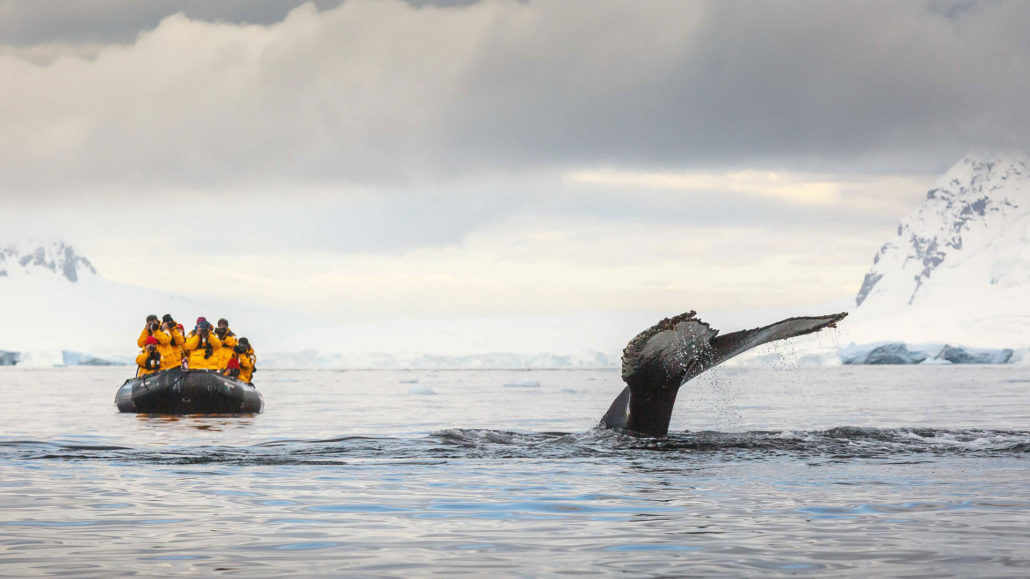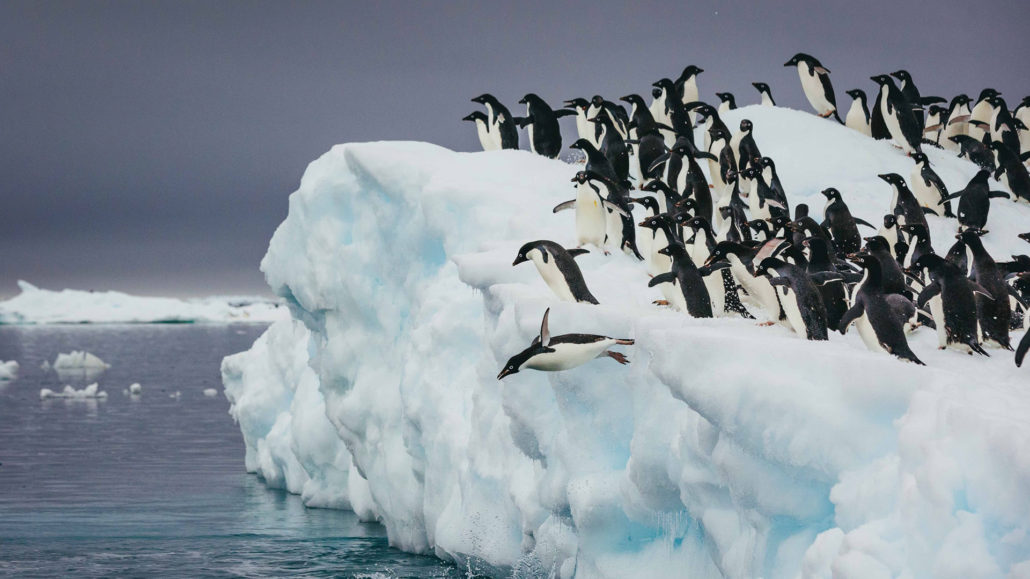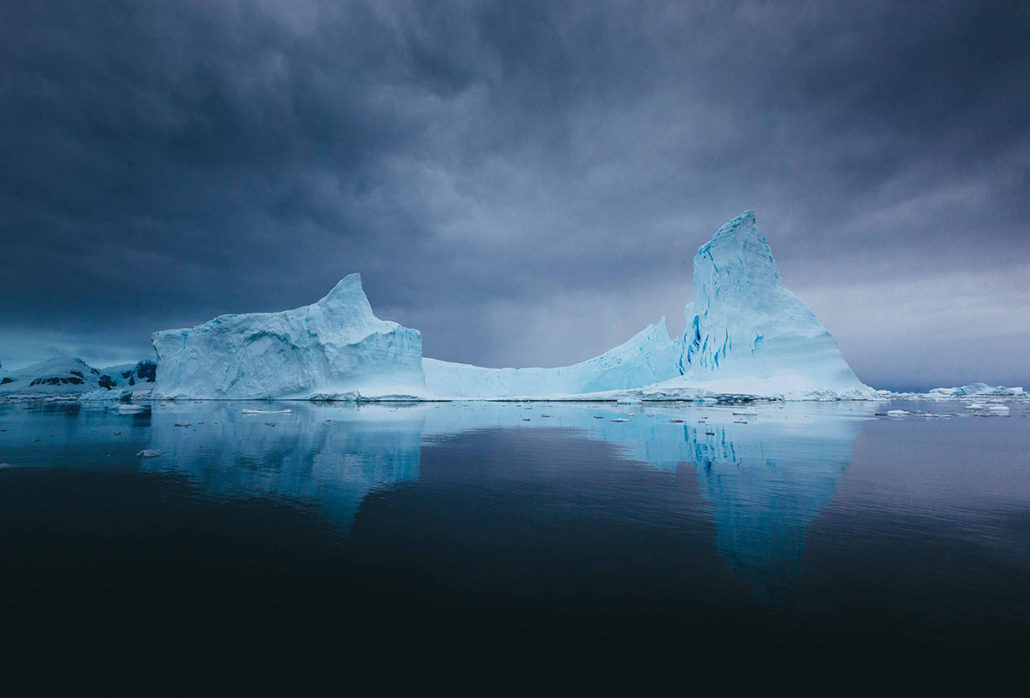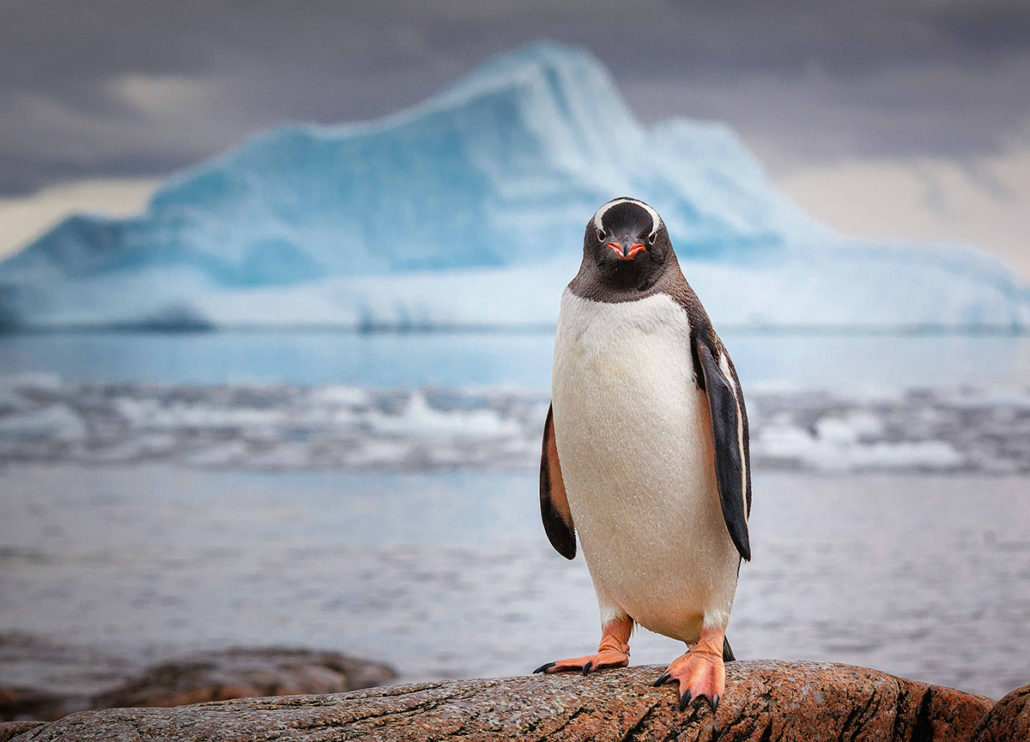Blog
An interview with polar photographer, David Merron
Toronto-based photographer David Merron has spent the last few years capturing the wild, beautiful, and fragile regions of Antarctica and the Arctic. We asked him what it’s like working in one of the most remote places on earth and what his tips were for travellers.
You’ve been a photographer in the polar regions for several seasons now. How special is working there in that capacity?
Having worked in Antarctica for four seasons, I can honestly say each year gets better and better. Being fortunate enough to go down there is a dream come true. The more time I spend in Antarctica, the more I appreciate everything we encounter.
Where is your favourite spot in Antarctica?
I would say in a Zodiac somewhere with penguins resting on the surrounding ice, and whales and seals in the water nearby. This can happen anywhere in Antarctica, so I don’t have a favourite spot – just floating in a small boat taking it all in.
Having experienced Antarctic conditions, where the weather and wildlife are unpredictable, do you have any photography tips for travellers?
I would recommend bringing some form of cover for your camera to protect it against the elements, especially when cruising on Zodiacs when things can get wet quickly. Before you leave, try to get to know your camera – Antarctica is not the place to learn how to use it. You might have five days down there, and you want to maximise every opportunity that you have.
Can you take us through some shooting tips?
Shutter speed is crucial for wildlife photography. As most of your subjects are moving around you will want a relatively fast shutter speed to freeze the action. My general rule for fast moving subjects such as porpoising penguins, elephant seals jousting, or when birds are flying, is to shoot at 1/1000 of a second at least. This way I am guaranteed to freeze the action, and as long as the focus is correct, the image should be tack sharp. Of course, as the movement of the wildlife slows (penguins nesting), you can afford to have slower shutters speeds.
When it comes to file formats, I personally shoot in RAW as opposed to JPEG. My main reason is for post-production editing, as RAW records all of the data from the sensor so you can correct any minor exposure mistakes that happen along the way. If editing your photos is not that important to you, then I would recommend staying shooting JPEGs. If you are not sure, shoot in both formats (if your camera allows) so that you will always have that RAW file available in case your photography progresses.
What’s a unique wildlife encounter you’ve experienced?
I have been fortunate enough to have many amazing wildlife experiences. If I had to pick one, it would be from this past year. We were at Brown Bluff, a landing site that we visit periodically. On this occasion, there was a constant flow of thousands of Adelíe penguins walking along the beach in one direction. There is a colony there of approximately 25,000 pairs, but on this day the beach was overrun. It went on for hours and was a very cool experience.
How do you balance trying to get the perfect shot while also living in the moment and taking the time to reflect on your natural surroundings?
It’s very difficult! I think it has taken some time to be able to relax and realise where I am. I’ve had many experiences where I was so focused on getting the right shot that I didn’t really enjoy the moment. Now that I’ve had quite a lot of different encounters, I don’t feel the need to photograph everything. I can just sit back and enjoy it and help my passengers photograph it.
What’s your ideal camera setup?
My ideal setup is two cameras. I use Canon, but any brand is fine. I prefer to have one long lens (I use a 70-200 mm zoom lens) on one of the bodies so that I can capture wildlife and far-off icebergs. The lens doesn’t have to be too long as we can usually get quite close to the wildlife in Antarctica. On my second body, I like to have a wide-angle lens for capturing landscapes or large penguin colonies.
If you don’t have two bodies, there are certain lenses out there that shoot both wide and long, so you don’t necessarily have to have two bodies, just make sure you have both covered.
What are your plans for the future?
I plan on continuing to guide down in Antarctica for the foreseeable future as well as the Arctic. I’ve lived in the Arctic for the past two summers, and there is so much to see up there. Other than the polar regions, there are a lot of places I still want to visit and photograph such as the mountain gorillas in Central Africa, the grizzly bears on the west coast of Canada, and the insane amount of wildlife living in the Galapagos Islands.
Do you have a favourite shot that you’ve taken? Is there a story behind the photo?
I have a few, but if I had to pick one, I guess it would be this one. I like the look of the penguin here – a great pose, a bit of attitude, great light, and the perfect background with the vibrant blue iceberg. Also, this was taken on day two of my first ever trip to Antarctica. I’ve been on over 30 trips now and taken over 100,000 photos. It’s crazy to think that I shot my favourite so quickly.











